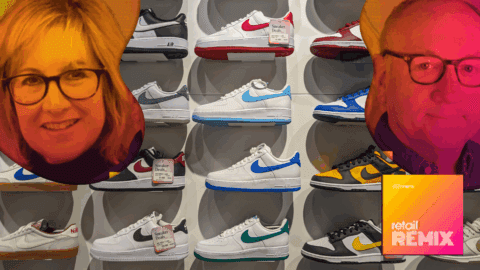During the 2013 holiday season, retailers relied on time-sensitive deals, flash sales, door-busters and price-matching policies to drive sales.
Faced with a condensed holiday season and increasingly price-savvy consumers, leading retailers, including Best Buy and Target, promised to not only offer the hottest gifts at the lowest price, but to honor lower prices and discounts offered by competitors.
But what impact did highly competitive pricing and promotions strategies have on the bottom line?
{loadposition TSHBAIAA022014}
Overall holiday results provided by the National Retail Federation (NRF) confirmed that total sales increased 3.8% year over year, reaching $601.8 billion. Non-store holiday sales also increased 9.3% to $95.7 billion.
Although sales were overall in the green, consumers still were hunting for the best deals, and price-matching policies evidently put a strain on margins.
“Price-matching policies this holiday season definitely played a positive role for shoppers, but they were more of a gamble for retailers,” said Pam Goodfellow, Principal Analyst and Consumer Insights Director at Prosper Insights & Analytics. “Those retailers offering price-matching were able to ring up sales that might have otherwise been lost to a competitor, but they really paid for this with lower profit margins.”
Typically, consumers see price as a primary factor in overall buying decisions. Coupled with the highly volatile economic climate, price sensitivity has become even more magnified in recent years. Prosper Insights & Analytics projected that consumers would budget approximately 1.9% less for gifts, décor, cards food and flowers compared to the previous season, Goodfellow explained. “Retailers tracking the pulse of consumers were well aware that this was going to be a very competitive season — promotions needed to be frequent and exciting to attract the attention of the very budget-conscious shoppers.”
Price Matching Hurts Some Q4 Results
Best Buy is a notable player in the price-matching game, not just during the holidays, but year round. For the 2013 holidays, the electronics retailer expanded the price-match guarantee to items that customers already had purchased. If a competitor or Best Buy offered a lower price than a customer initially paid, the company would pay the difference.
Initially, the retailer predicted that its competitiveness would influence the total profit margin for Q4 2013. However, during the company’s financial earnings call, CEO Hubert Joly shared some less-than-positive details regarding holiday results.
“When we entered the holiday season, we said that price competitiveness was table stakes and an intensely promotional holiday season is what unfolded,” Joly said. “In both channels, the promotional intensity that began with Black Friday continued throughout the period, which led us and our competitors to answer one question: Do we make the incremental investment necessary to be price competitive and defend our market share? For us, there was only one answer.”
Joly explained that it was vital for Best Buy to “live up to our customer promises — and one of these promises is to offer our customers competitive prices. This investment in pricing did come with a higher-than-expected cost, and we now estimate our fourth quarter non-GAAP operating income rate will be 175 to 185 basis points lower than last year.”
Several factors influenced Best Buy’s negative holiday revenues, according to Joly, including: Aggressive promotional activity during the holiday period; supply constraints for key products; significant store traffic declines; and a “disappointing” mobile phone market.
Target also fought to stay top-of-mind with its multichannel “My Kind Of Holiday” campaign, as well as a series of initiatives to make holiday shopper easier — and more cost effective — for consumers. In addition to the price-matching policy, Target remained consistent with discounts and offered a new in-store pick-up program.
Despite double-digit online growth, and mobile sales increasing by more than 100% for the holiday period, Target closed off the holidays with less-than-stellar results across the board, revealing in a financial news release that Q4 2013 comparable sales declined by approximately 2.5%.
However, it also is important to note that some retailers that did not implement competitive pricing saw even poorer results. For instance, H. H. Gregg saw net sales for the quarter decrease 11.6% to $707.1 million, while comparable store sales fell 11.2%.
Price Matching To A Fault?
Consumers have access to more tools and resources than ever before, which empowered them to make more informed decisions during the 2013 holiday season.
Nearly half (48%) of shoppers said they planned to “showroom” and inspect merchandise in a physical store and purchase it at a later date online for less money, according to the Winter Holiday Shopping Survey from PriceGrabber.
Many industry experts believe the intense focus on price may have a negative impact on brand perception and loyalty.
“I think price matching ‘jumped the shark’ this holiday season,” said Jenn Markey, VP of Marketing for 360pi, which is spotlighting holiday pricing research in an upcoming webinar. “A year ago, retailers were jumping on the bandwagon to extend holiday price match guarantees through the rest of the year. Now, there’s a definite shift back. Moving forward, it’s about creating unique customer experiences where customers perceive pricing to be fair, but not necessarily the lowest.”
Quarterly and holiday sales results from Best Buy, Target and others demonstrated a clear difference between top-line results and bottom-line results, according to Nikki Baird, Managing Partner at Retail Systems Research. Although retailers “did okay” in terms of their top-line sales, they had to “give away more margin than they planned,” she said. “Price matching took competitive angst off the table, but it didn’t help retailers ‘win’ when it comes to the bottom line.”
Price Is A Moving Target
Besides the price-matching plays that garnered media and consumer attention, retailers implemented a mix of other pricing strategies throughout the holiday season.
While some retailers continually reduced prices and “gave up the ghost,” others dynamically priced items based on consumer demand and market competition, according to Greg Girard, Program Director of Merchandise Strategies for IDC Retail Insights. “Retailers were very savvy in the way they manipulated prices over time, especially as they approached Black Friday and Cyber Monday.”
Girard added: “Price matching is a crapshoot for both the consumer and retailer. You can come in with a printout or tell an associate you saw a certain price, but when they look it up it may not be there anymore. Price is a moving target and it breeds fear, uncertainty and doubt.”
That is why more retailers are attempting to alter prices in real- or near-real-time based on consumer location, spending trends and competitor pricing.
“Every business should be customizing the way they compete and dynamic repricing — also known as strategic repricing — allows sellers to do just that,” said Koby Kasnett, Co-Founder and CEO of Appeagle, a repricing solution provider. “With the ability to customize repricing strategies, we are seeing sellers quadruple their sales.”
Because dynamic pricing enables merchants to make better decisions based on market conditions and consumer demand, Baird sees this as a strong area of opportunity in 2014.
“I could see more retailers experimenting with dynamic pricing next holiday — either offering some kind of hourly-based pricing in stores, or offering responsive coupons to key shoppers in stores based on what’s going on online,” Baird said. “That will be another interesting pricing area to watch.”
Regardless, price is one component of the retail experience that is in a constant state of change.
“Consumers have visibility into prices, but the velocity of the price changes has increased, and so has the variability of those prices,” Girard said. “Ultimately, the power of the pocketbook is with the consumer.”
Tackling Discount Fatigue
Pricing-matching strategies may have been less effective because retailers were releasing new deals and sales at such a rapid pace throughout the season.
“In many cases, shoppers started to exhibit ‘discount fatigue,’ which meant retailers were giving up a lot of margin, but not delighting customers in the process,” Markey said. The holiday survey from PriceGrabber also confirmed that consumers were expecting more deals as the holidays progressed: 54% of shoppers said they believed the best discounts would be offered in December. The vast majority (83%) of shoppers, as a result, said they would continue to comparison shop for gifts throughout the month.
To that end, Markey indicated that this year exposed the “Black Friday myth,” where deals on the landmark shopping holiday were actually higher in comparison to the rest of the holiday season.
“Early returns seem to indicate that consumers largely relied on their perceptions of pricing and retailers with a low-price perception, notably Amazon and Walmart, that held or raised prices at this time delivered short-term gains,” Markey said. “It will be interesting to see how this plays out longer term and if their low price reputation and customer loyalty takes a hit.”
Competing Beyond Price
In terms of the overall influence of price-matching policies, perception is sometimes more important that reality.
“For those retailers that are renowned for low pricing, customers often assumed they were getting lowest price and did not challenge — we observed this across multiple categories at Amazon,” Markey said. “This made price match guarantees largely a marketing vehicle and yielded positive returns for these retailers.”
Price matching can become a “double-edged sword” for some retailers, Markey added. “This can be necessary to reassure shoppers and get them to convert, but can also wreak havoc with short-term margins. It will be interesting to watch if the long-term gain in terms of customer loyalty and price perception offsets short-term pain.”
Retailers that do not aspire to have a low-price positioning should avoid price matching altogether. “For these retailers, offering a price match guarantee was detrimental to their brand promise, adversely impacted margins, and in some cases, alienated their core shopping demographic.”
While price matching can be effective for some retailers, maintaining service levels can yield greater benefits, especially during the holidays. Baird noted that retailers “made the mistake of cutting labor to thin and not hiring up enough in advance of the holidays. If retailers want stores to remain the primary part of the holiday shopping experience, they’re going to have to step it up a notch over what they did in 2013.”
During the holidays and beyond, retailers need to focus on differentiation, whether it’s through service, products or loyalty rewards. Competing on price alone, Girard noted, is “a race to the bottom.”
Girard advised: “Find something else to win the hearts, minds and wallets of consumers. Don’t just focus on price. Differentiate on knowledge or customer service. In the field of complex products especially, differentiating based on service and assortment is key. If you’re selling simple or commodity products it’s difficult to compete on those things, so maybe you’d compete on assortment and experience, or making the path to purchase easier.”












